While staying at the iSimangaliso Wetland Park in St Lucia we took about an hour drive to visit Hluhluwe iMfolozi National Park (‘hl = sh). Formerly Hluhluwe-Umfolozi game Reserve, the oldest proclaimed natural park in Africa proclaimed in 1895, this hilly terrain is known for its rich wildlife and conservation efforts.
Unfortunately, it was extremely hot and we really didn’t see that much wildlife. The zebra on the right will soon bring another life into this world.
The park was originally created to protect the then endangered white rhino and now has the largest population in the world. We saw the back part of 1 of the 1600 current population.
As the home of Operation Rhino in the 1950s and 60s, the park became world-renowned for its white rhino conservation. Although hundreds of these animals have been moved to parks around the world the program has recently been compromised by the increase in rhino poaching within the park.
Also considered a prime birding destination the park is home to 340 bird species of which we saw few. We even walked out to the Thiyeni bird hide through this fenced maze but saw nothing.
Well that’s not entirely true as we saw some termite mounds, but they are seen all over. Now this may not seem very exciting but termites play an important role in breaking down woody materials to make soil. Plus the termites feed the aardwolf, or anteater, and the old mounds provide dens for warthogs and other animals.
Throughout the park there are many signs of Stone Age settlements as the area was originally a royal hunting ground for the Zulu kingdom. This pile of rocks, known as “isiVane” is a Zulu maker where a traveler died and was covered by stones to protect the burial from scavengers. People passing by would pick up a rock, spit on it and add it to the pile as a sign of respect.
The first visitor camp was built at Hilltop in 1934. The restaurant was very expensive so we ate PBJs in the parking lot instead.
We only stayed a few hours because of the heat then on the way back to Sugarloaf camp stopped for lunch in Mtubatuba where my bathroom bag and computer were stolen out of the back of the locked truck, then relocked.


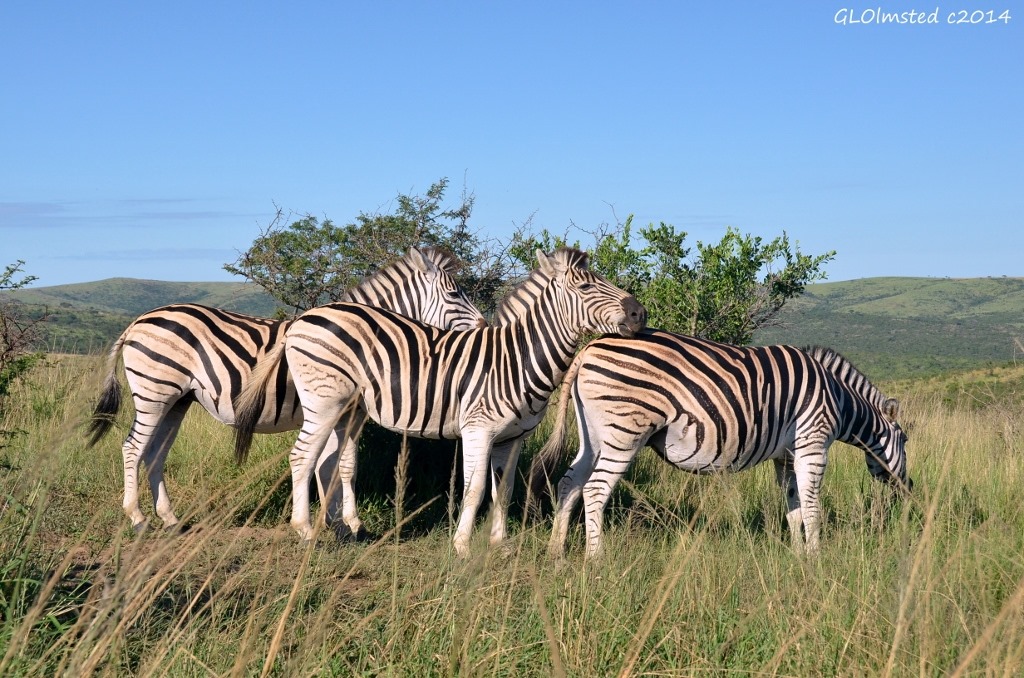
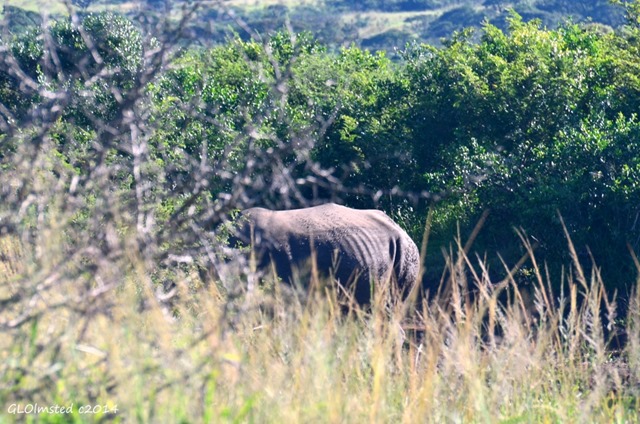
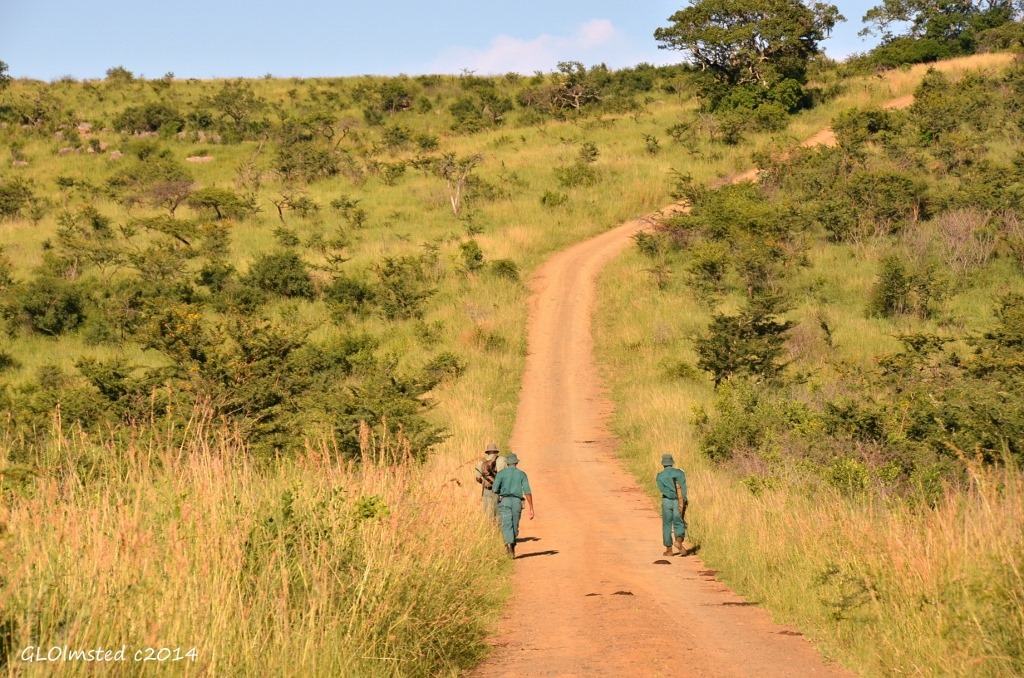
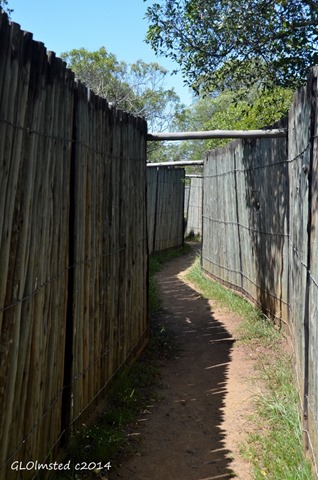
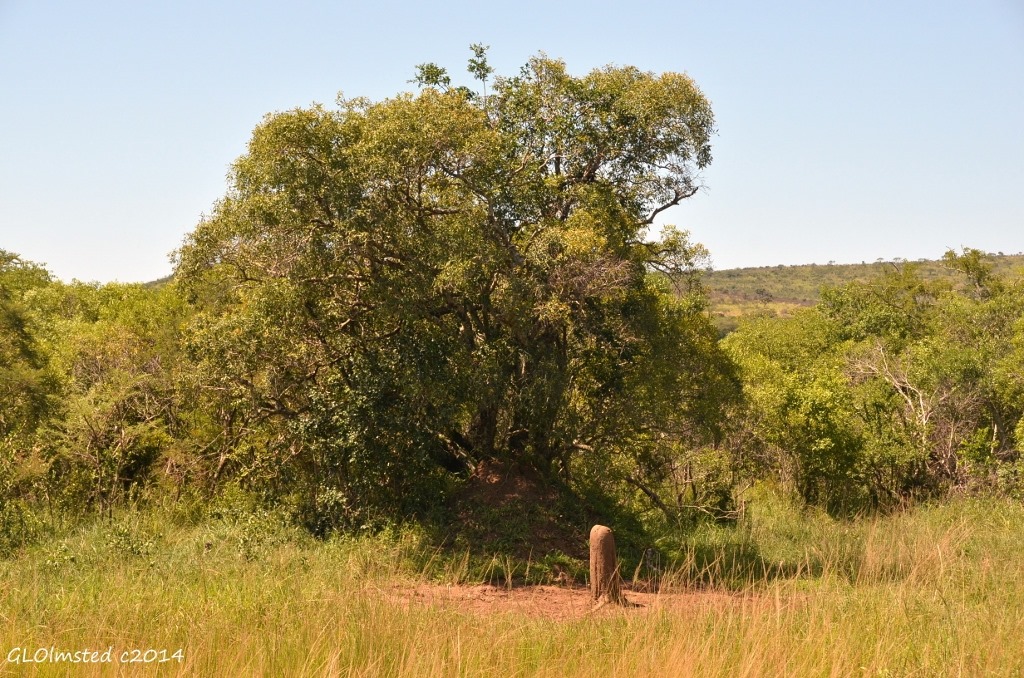
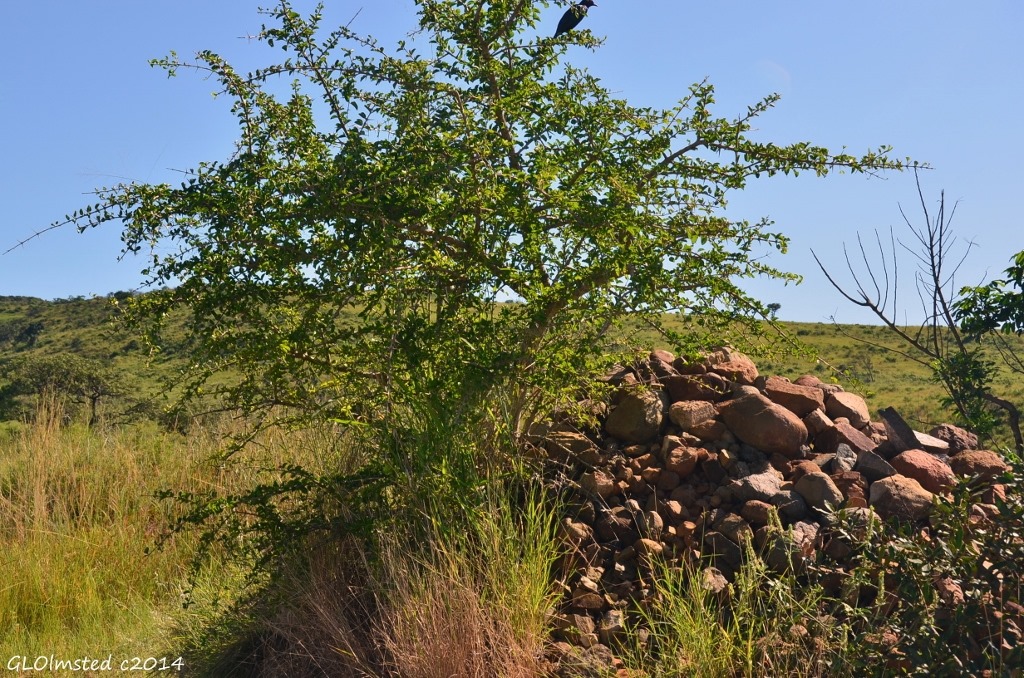
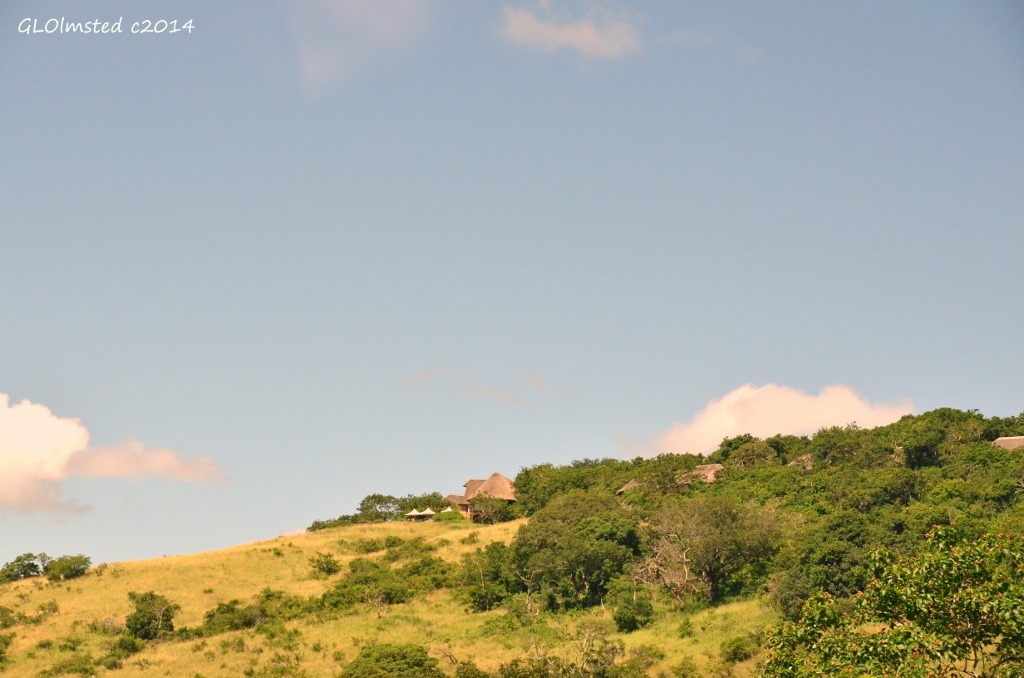

Hot but wonderful animal sightings. Love the pregnant zebra, scenery and giraffe.
It was a nice diversion from the beach.
Really enjoyed this post, Gaelyn.
Too bad you didn’t get to see all that you were hoping for but you did get some really good photos anyway. Loved the zebras.
I didn’t have any expectations but had been spoiled by all the wildlife at Kruger.
Boy that park name is sure a tongue twister. And of those zebras!! Beautiful photos, wonderful trip documentary. Thanks!
Most of the place names in South Africa are unpronounceable to me.
Gaelyn-
Did your computer get stolen a second time?! I certainly hope not.
Enjoying your blog posts. Thanks so much!
Best,
Maria
No second theft, just referring to it.
Gorgeous zebras and giraffe. I’d be thrilled to see the back end of the rhino. But I’m unhappy to hear about the poachers. Who are they poaching for? Stop it at the source is the best idea but to do that, you have to know who is buying it and catch them in the act and then have outrageously strong laws. Sounds nearly impossible. So sad.
The largest importers of horn and ivory is China and the USA. It’s not an easy job to catch poachers when the landscape is SO big.
That seems like a lot of animals to me. How sad that poachers can still make a living. The buyers (like with other illegal substances) are certainly at fault too.
The whole poaching game is just down right ugly.